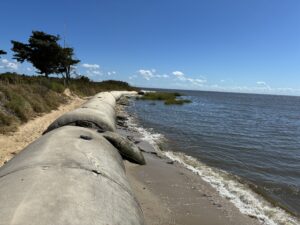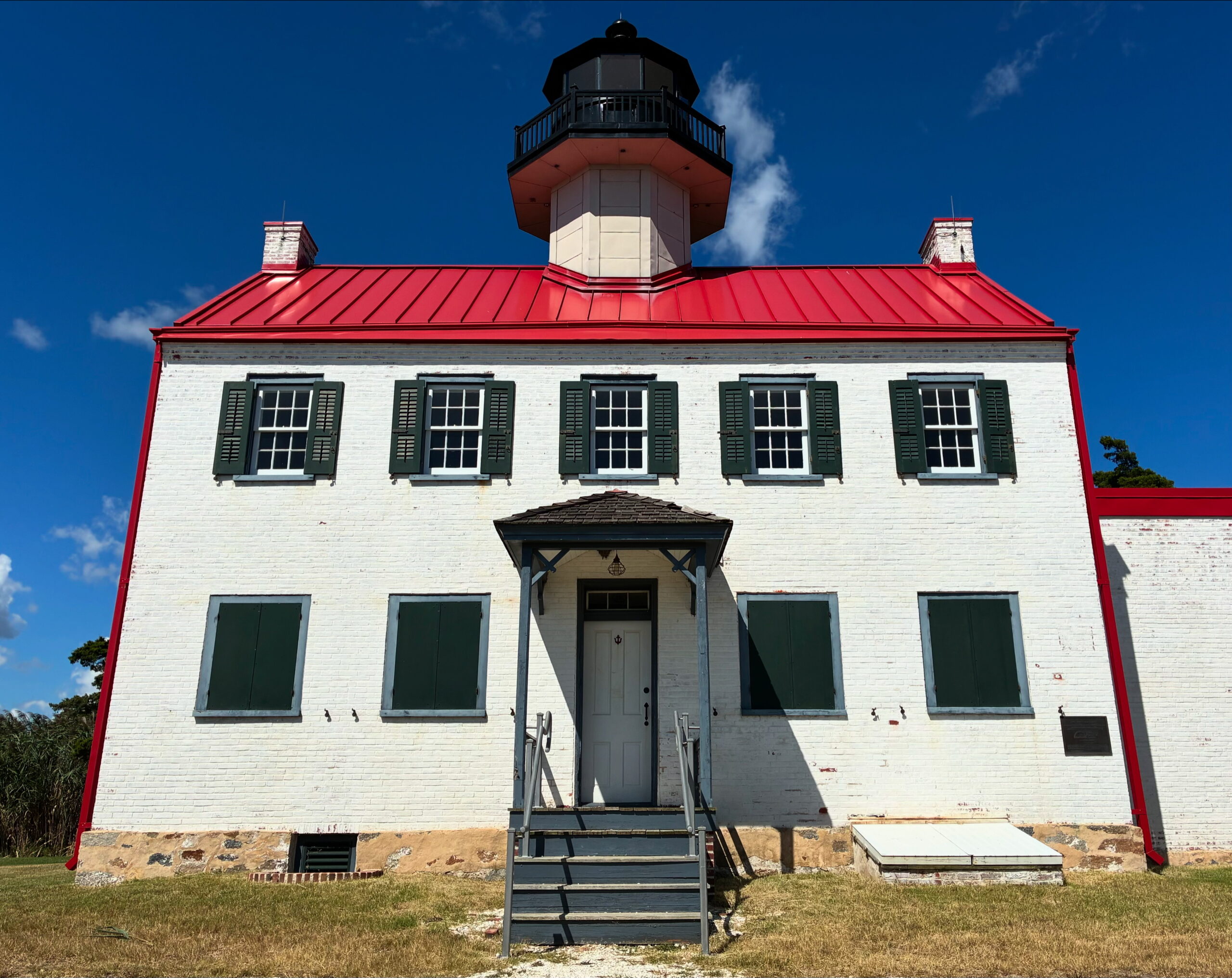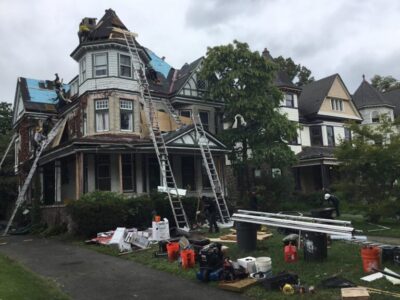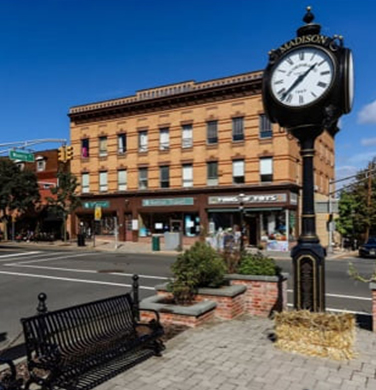The East Point Lighthouse sits at the end of a two-mile road that cuts through a seemingly endless marsh. It feels remote, but that is one of its charms. Monarch butterflies dance among the swaying reeds during their late summer migration.
But its remoteness may also be its peril as preservationists believe state officials have given up on maintaining it.
The lighthouse used to be open to the public, welcoming visitors to one of Cumberland County’s most important landmarks — it is the second oldest lighthouse in New Jersey.
Last year, members of the Maurice River Historical Society, the building’s longtime caretakers, cleaned out the historical artifacts inside and handed over the keys to officials at the Department of Environmental Protection. The historic building has been locked shut ever since.
The DEP, which owns the building, claimed that it spent a year trying to come to a contractual agreement with East Point Light, LLC, which was created by members of the Maurice River Historical Society to use the building.
Vincent Grassi, press officer for the DEP, said the state department did everything possible to come to an agreement. “The DEP extended license terms with the Historical Society seven times to allow the only bidder, East Point Light, LLC, sufficient time to execute the lease,” Grassi said.
But Nancy Patterson, president of the historical society, sees things differently. Signing the agreement, she claims, would have put the historical society in a bad predicament. The contract, she claims, included a line that could have allowed the DEP to seize her nonprofit’s bank account.
“If I had signed it, they would have kicked us out and bankrupted us all at the same time,” Patterson said.
Since the 1970s, the Maurice River Historical Society has been the keepers of the lighthouse. They were operating it as a house museum furnished to look like it did when it opened 175 years ago.
“You could go and sit in a chair and pretend you were visiting the lighthouse workers,” Patterson said.
This isn’t the first time the lighthouse has been vacant over the course of its history. Before the historical society took over in the 1970s, it sat empty for three decades. The last custodian to live inside the lighthouse was Gustave Eulitz in 1941, when it was decommissioned to avoid attracting German submarines during World War II.
The lighthouse slowly deteriorated before going up in flames in 1971. The Maurice River Historical Society was formed for the express purpose of saving the lighthouse. It began its first lease with the state government in the 1970s and has guided the lighthouse through two extensive restorations and even got the building listed in the National Register.
Grasso said that state department does intend on reopening the lighthouse and is now considering a management agreement with Cumberland County.
If the historical society has been the building’s sole caretaker and knows the building inside and out, why would the DEP want the historical society to leave? This is the mysterious part.
Patterson believes the DEP’s neglect of the lighthouse is a sign of a much larger abandonment of the Delaware Bay region, an area that doesn’t generate the same tourist dollars as other towns on the Atlantic Ocean, but is just as prone to erosion.
In 1908, the East Point Lighthouse stood 490 feet from the bay. Today, it is only 120 feet from the water. When the bay swells, the waves sometimes lash against the front door of the lighthouse.
“They’re convinced we’re fools for living here and we should pack up and move — they’ve given up on the area and we’re supposed to give up too,” Patterson said. “But these towns are historic and you just don’t give up on historic towns.”
In 2016, the US Army Corp of Engineers announced a $1.9 million plan to stabilize the shoreline near the Maurice River coastline, but the project never came to pass. The US Army Corp of Engineers never responded to questions about why the work never materialized.
The only measure to stabilize the shoreline came in 2020 when the DEP finished installing $595,000 worth of geotextile tubes — which are essentially massive sandbags — along 600 feet of the coast near the lighthouse. But this was only a “band-aid” on a much more complicated issue, according to Maurice River Township Mayor Ken Whildin.

Geotubes line the coast near the lighthouse. Photo courtesy of Darren Tobia.
“The geotube was put in place as a temporary measure,” said Maurice River Mayor Ken Whildin. “The DEP was supposed to have a Plan B — but that never happened.
Last year, the DEP announced plans to construct a mile-long sea wall along Beach Avenue in Cape May. North Wildwood saw a state-funded beach restoration project and could see a seawall construction coming this year.
Senator Michael Testa said the Delaware Bay region has been “forgotten” and is asking for a study about the use of jetties, sea wall, and beach replenishment to ward off erosion. “I know funding is finite, but this has been languishing needlessly,” he said. “It’s a part of the state that’s forgotten, or if not forgotten, then misunderstood.”
The erosion of the coastline is not only a threat to the lighthouse, but also nearby historic towns and to the habitat of horseshoe crabs, he said. In 2021, Testa met DEP Commissioner Shawn LaTourette at the lighthouse, but the visit hasn’t resulted in more investment into the region. “There needs to be someone different at the DEP,” Testa said.
Battered by wind and storms, lighthouses can be costly to maintain and quick to deteriorate. In 2016, the historical society oversaw a $852,000 restoration of the building. The restoration effort even won an award from none other than the DEP. However, knowing what happened the last time it sat empty, Patterson fears that all of their work could be undone.
“It doesn’t take long for an old building sitting empty to deteriorate,” Patterson said. “I can’t imagine what the inside looks like now — it just makes me sick to think about it.”







Kathleen Wyatt
| 12 October 2025Higbee Beach Wildlife Management Area (WMA), Lower Township, Cape May County
The Higbee project is funded with Natural Resource Damage funds and co-led by DEP’s Office of Natural Resource Restoration and Office of Coastal Engineering in partnership with NJ’s Division of Fish & Wildlife). The EastPoint lighthouse should be at the top of the list. This Higbee Beach project is worthy. It is a passive project. Saving an historic lighthouse cared for by the society is far more important.
J. Schnorbus
| 13 October 2025If you haven’t already, make sure gubernatorial candidates get this latest development on East Point Lighthouse, as well as NJ Congressmen Chris Smith and Frank Pallone who, although representing different areas of NJ, have strong records in historic preservation and environmental protection in NJ, and also follow up with phone calls to their offices, which are particularly responsive.